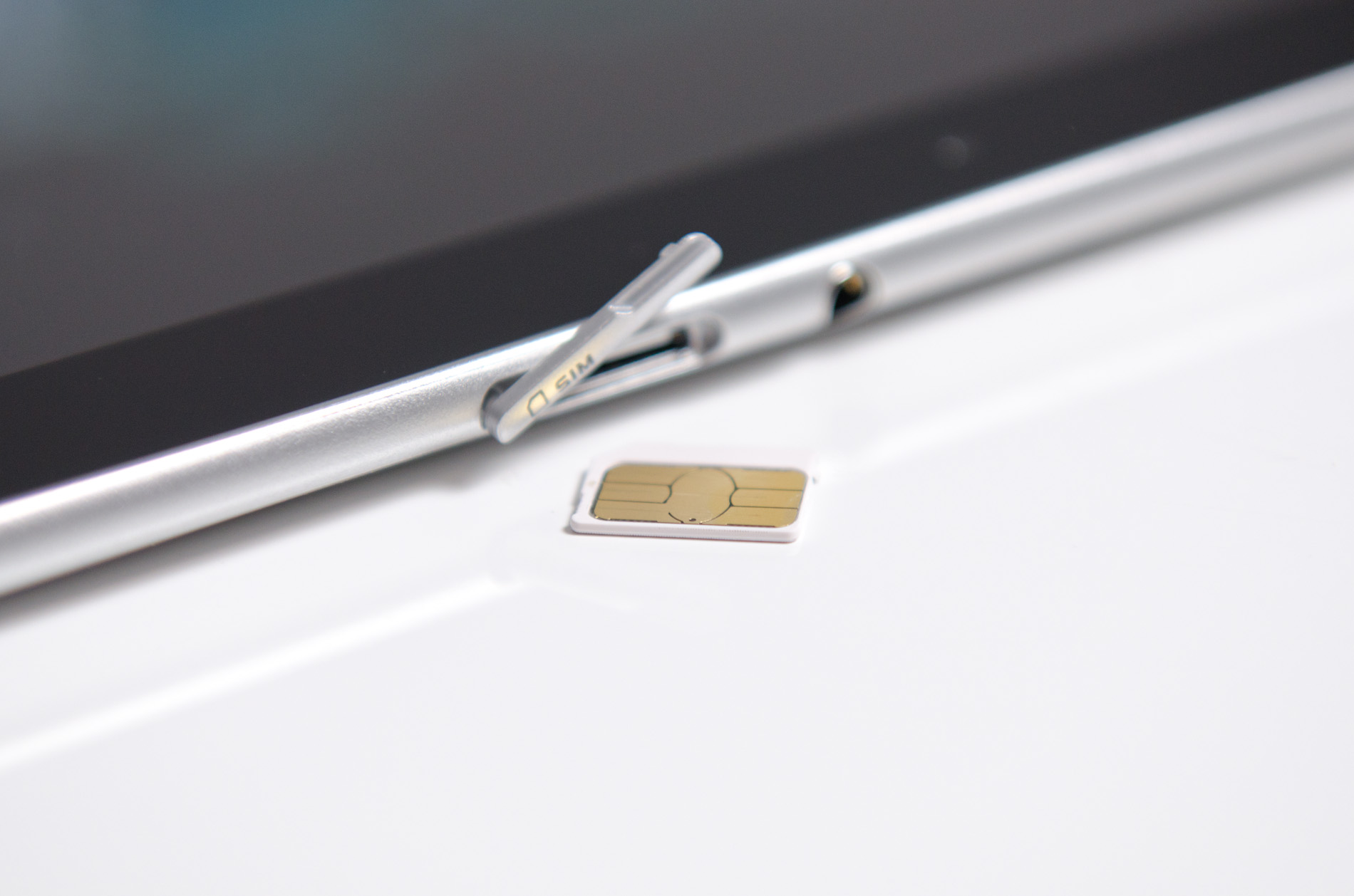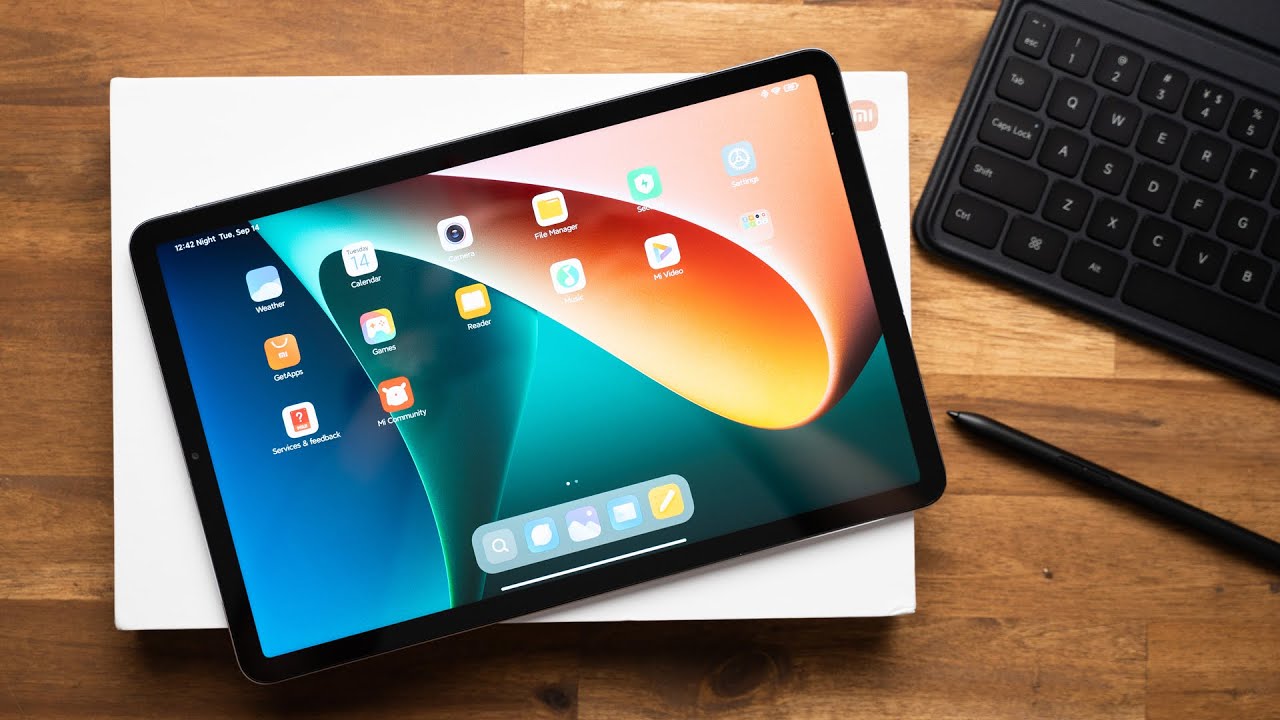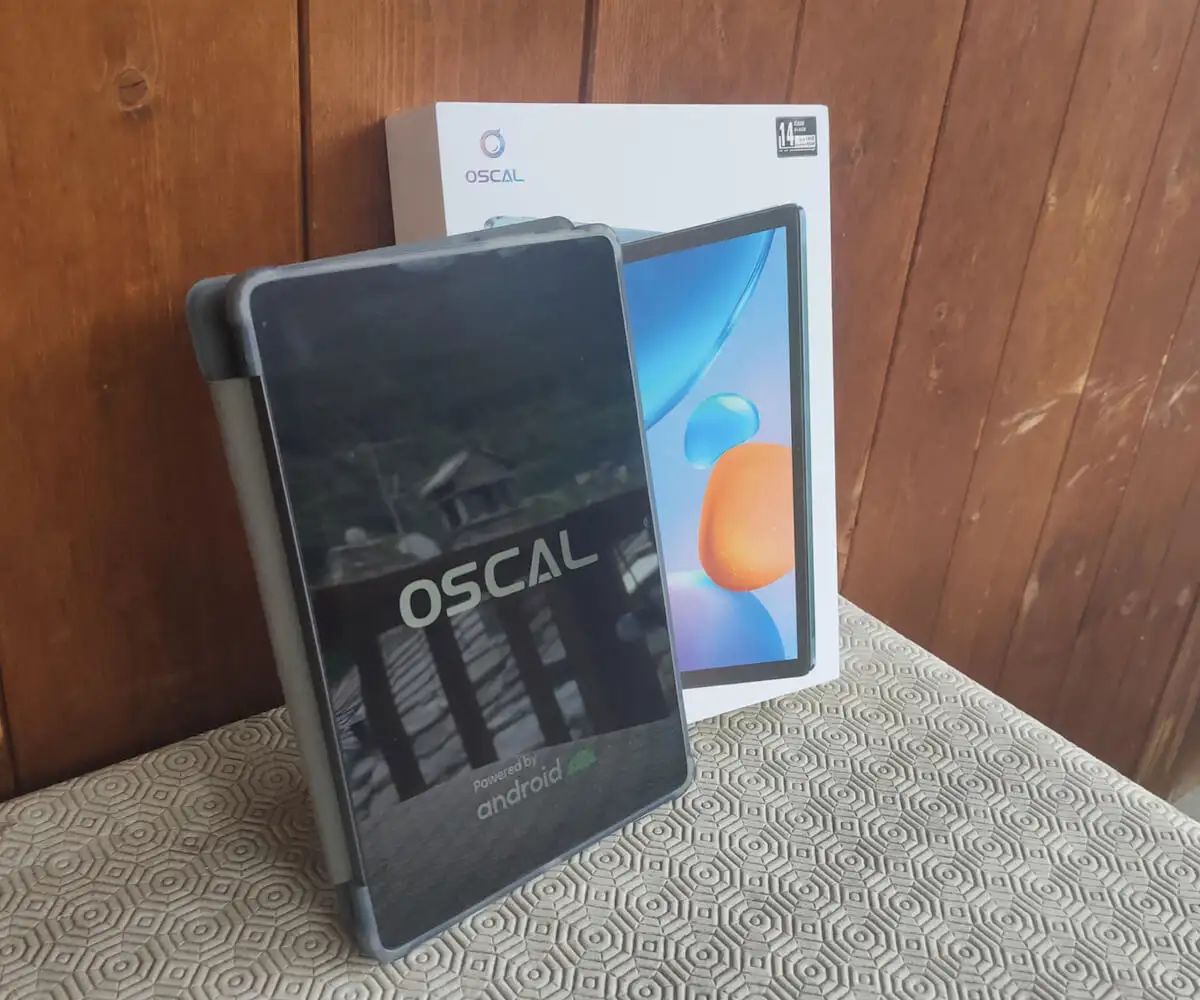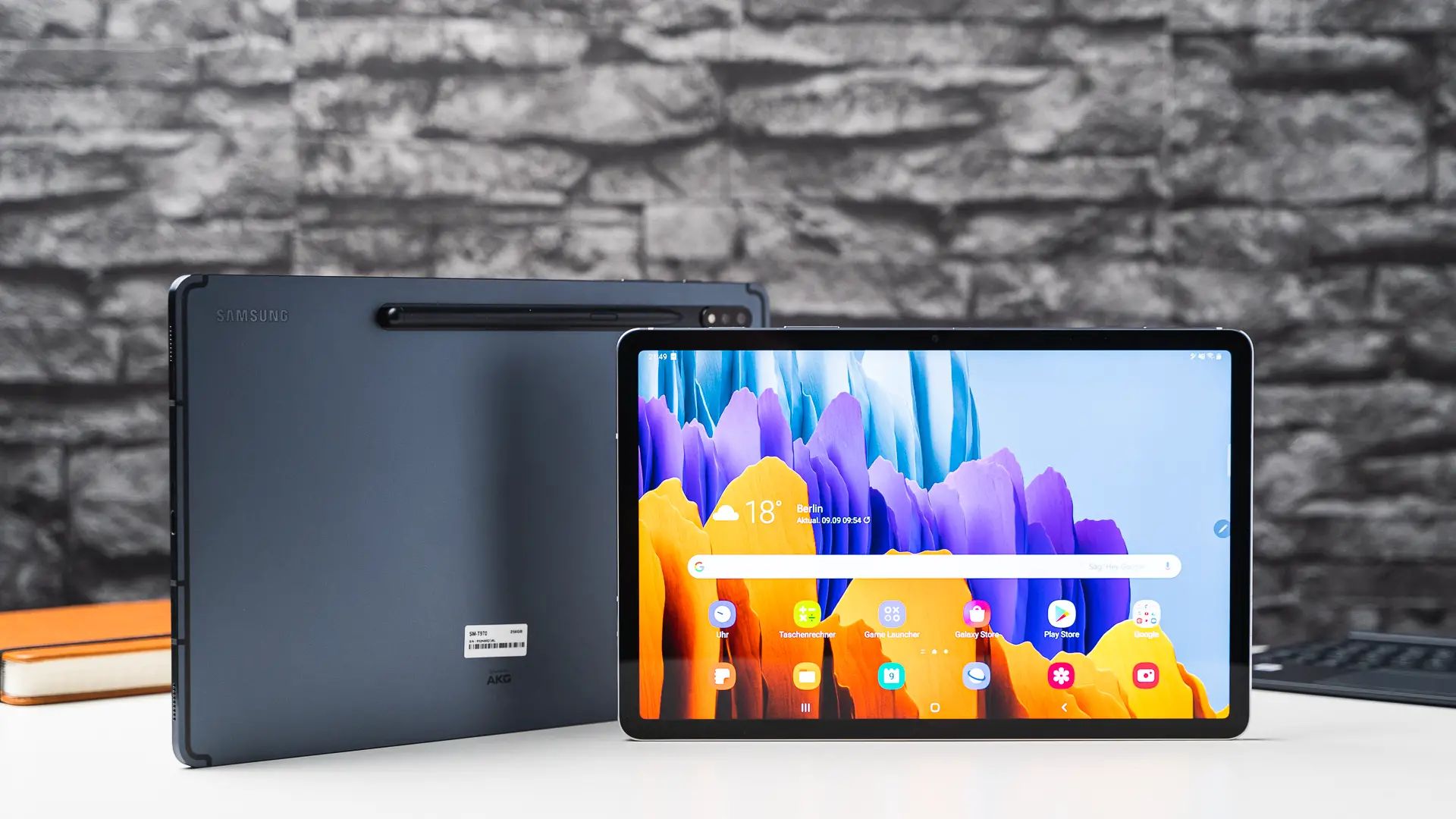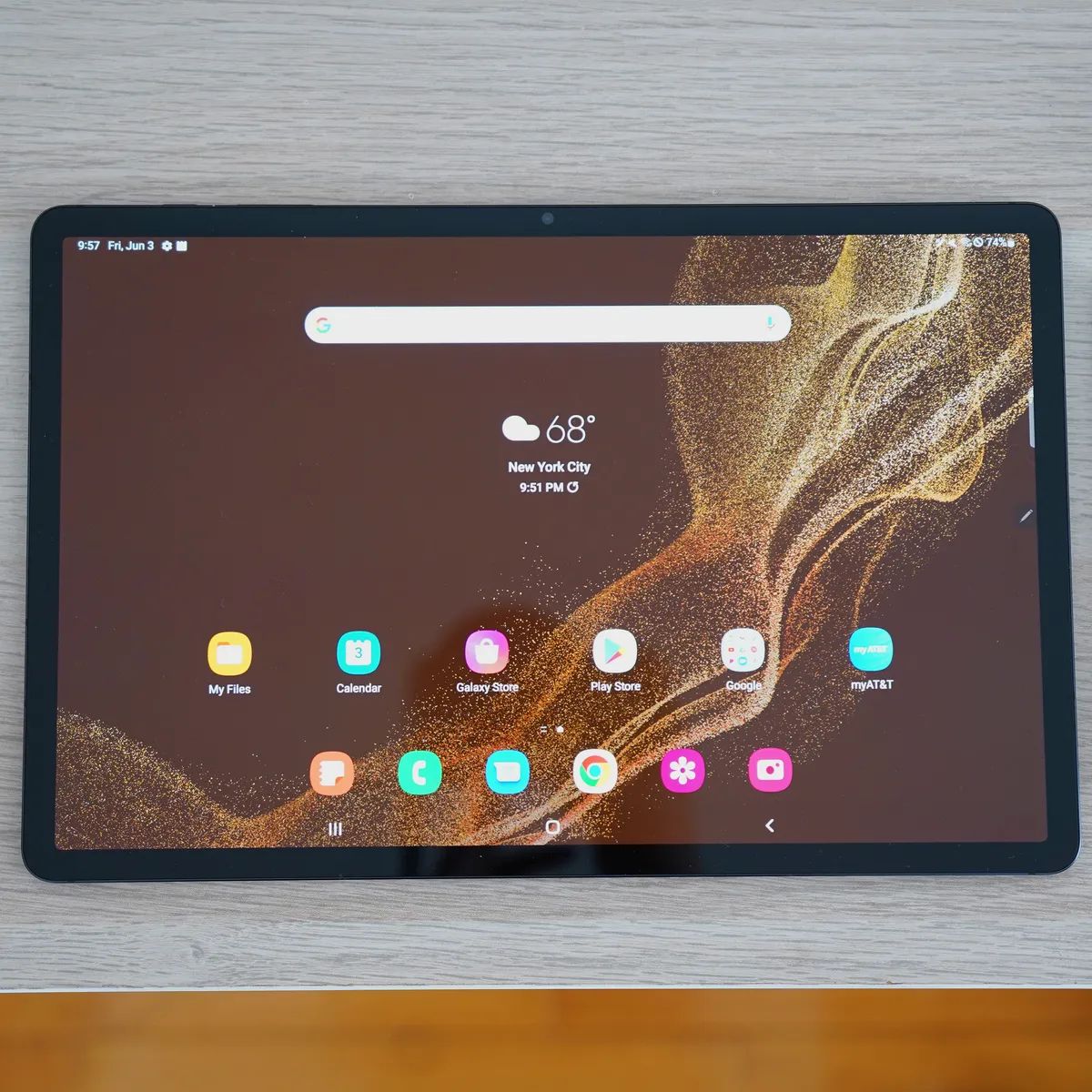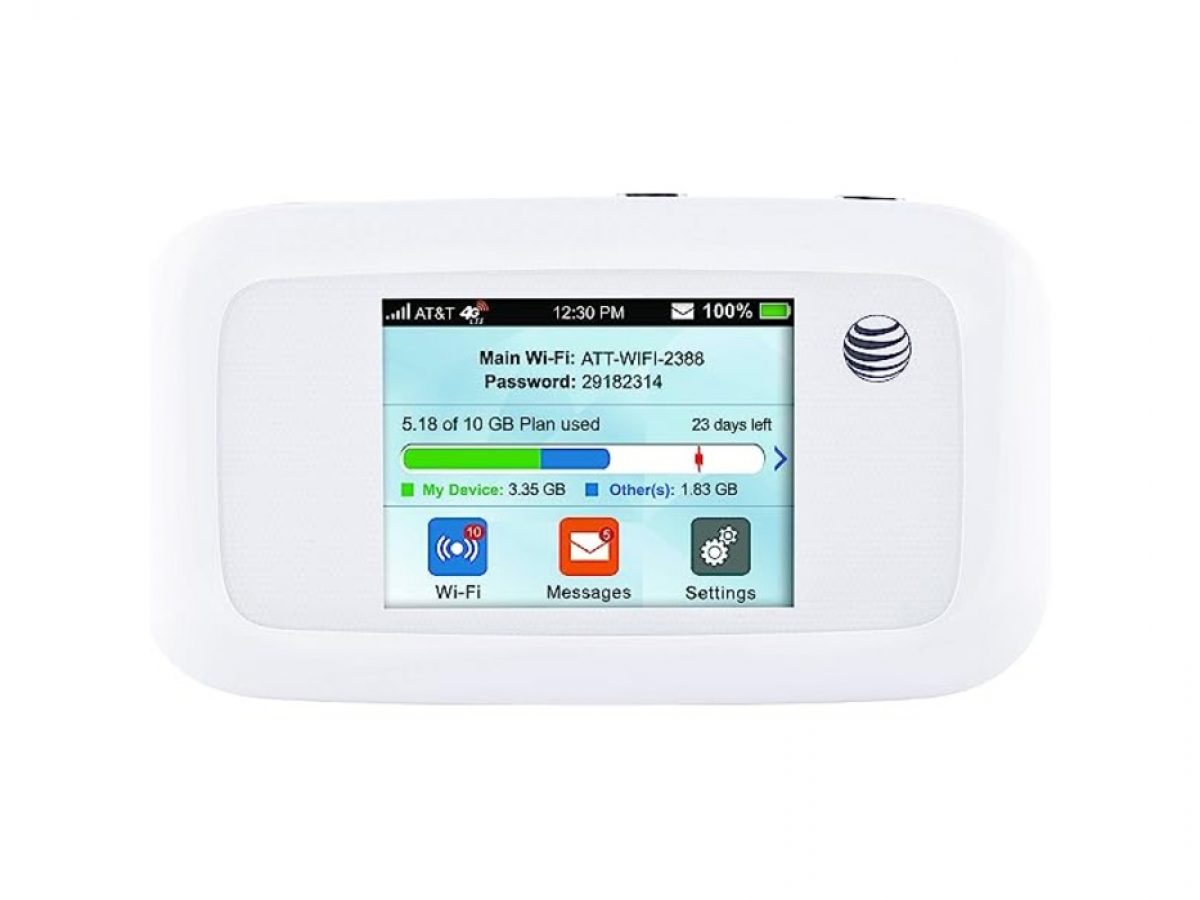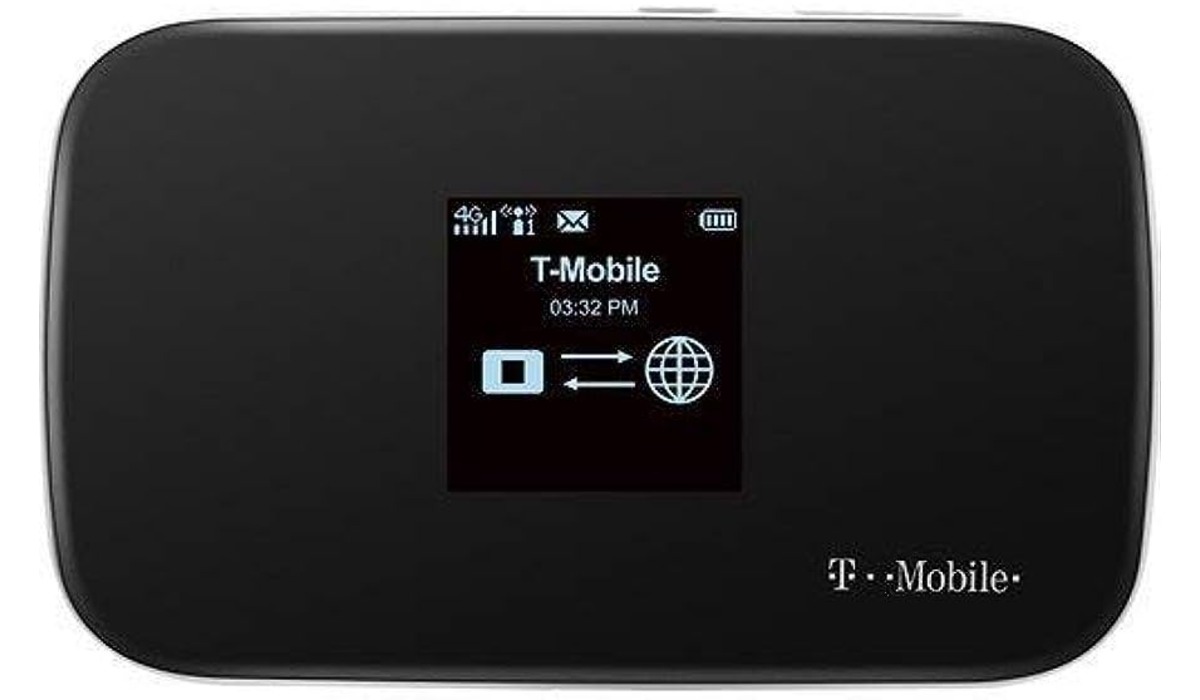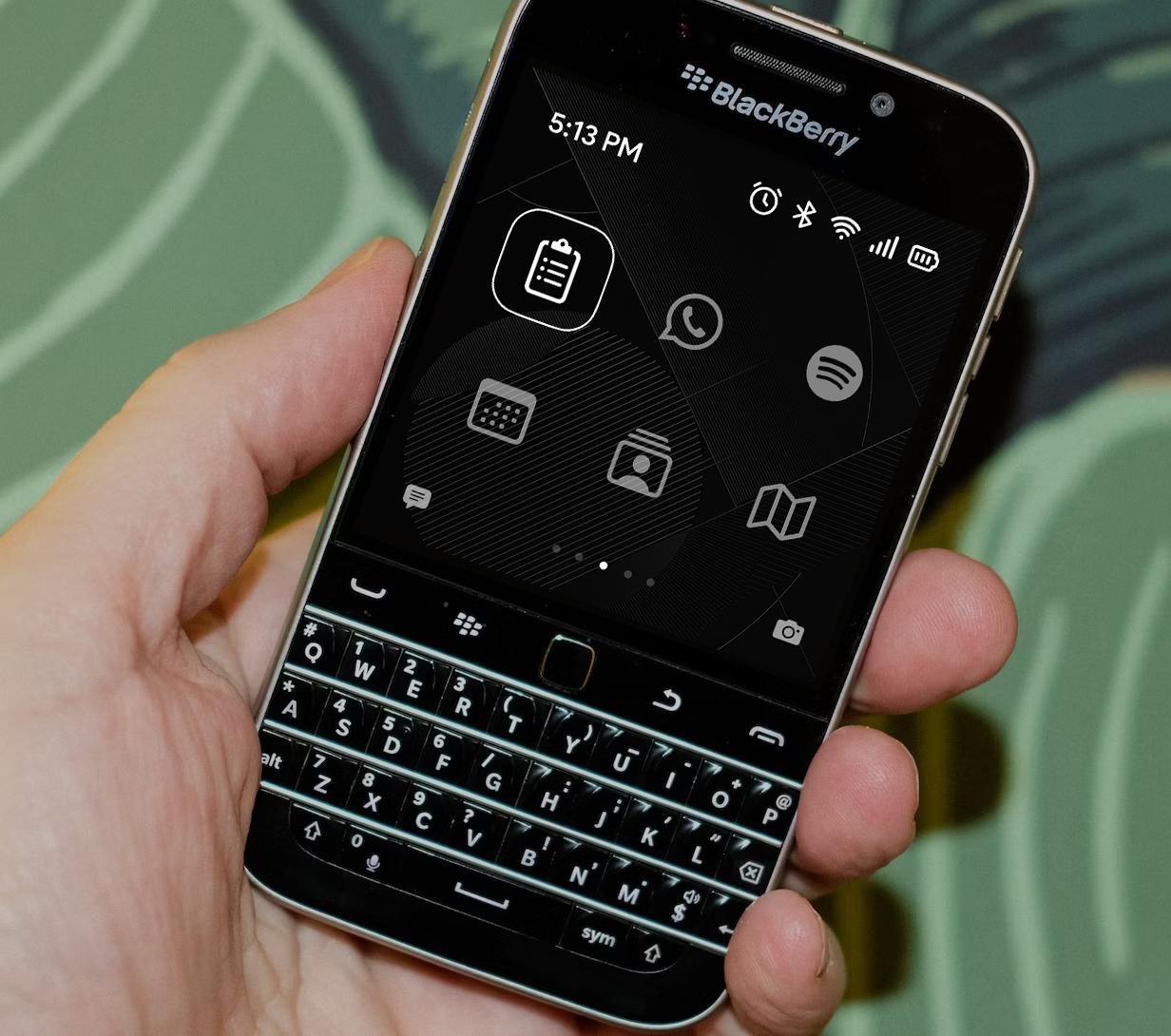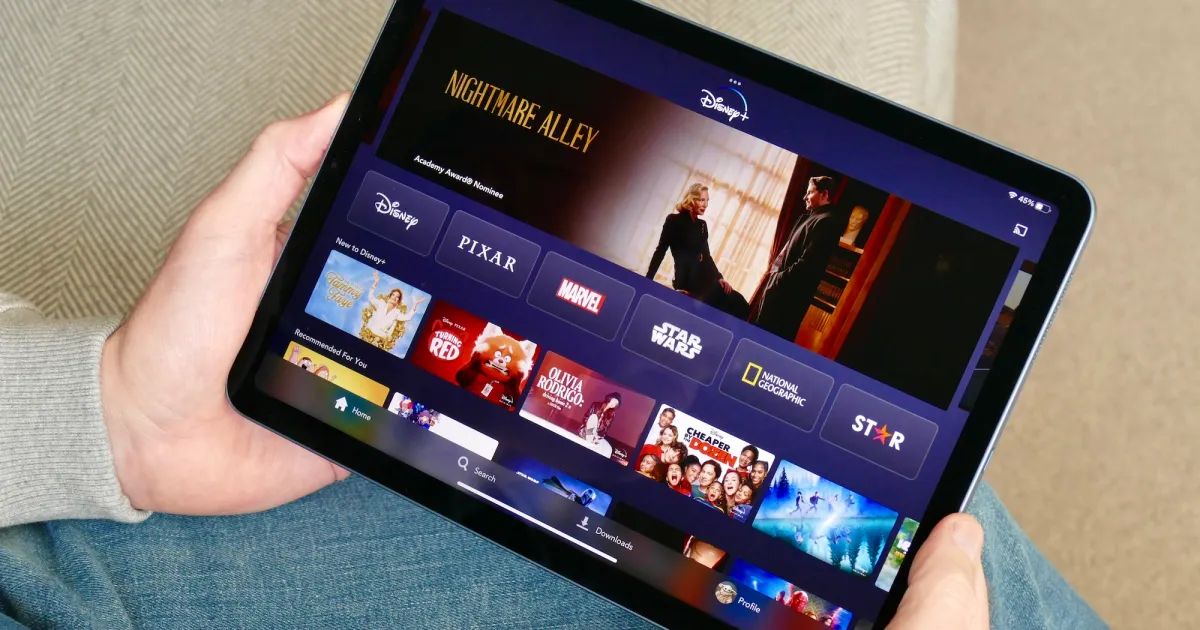What Does LTE Tablet Mean?
An LTE tablet refers to a tablet device that is equipped with LTE (Long-Term Evolution) technology. LTE is a standard for high-speed, wireless communication for mobile devices. When a tablet is labeled as LTE-enabled, it means that it has the capability to connect to cellular networks and access the internet at 4G LTE speeds.
LTE technology provides faster internet connectivity compared to traditional 3G networks, allowing users to browse the web, stream videos, and download files with greater speed and efficiency. LTE tablets are particularly useful for individuals who are frequently on the go and need reliable internet access outside of Wi-Fi networks.
Unlike Wi-Fi tablets that rely solely on Wi-Fi networks for connectivity, LTE tablets can access cellular networks through a compatible SIM card. This means that as long as there is cellular signal available, you can connect to the internet and use various online services, even when you are in areas without Wi-Fi coverage.
With an LTE tablet, you can do more than just connect to the internet. You can make voice calls, send and receive text messages, and use various cellular services, just like you would with a smartphone. This makes LTE tablets a versatile option for those who want the functionality of a tablet combined with the communication capabilities of a phone.
Moreover, LTE tablets are designed with built-in antennas that can capture strong cellular signals, providing better network reception and coverage. This ensures that you have a more stable and reliable internet connection, even in areas with weaker signals.
However, it’s important to note that to use LTE connectivity on a tablet, you may need to purchase a separate data plan from a cellular service provider. This can incur additional costs, so it’s essential to consider your data usage needs and choose a suitable plan that fits your requirements.
In summary, an LTE tablet is a tablet device that is equipped with LTE technology, allowing for faster internet connectivity and the ability to access cellular networks. It provides the convenience of staying connected wherever you go, making it an ideal choice for individuals who require reliable internet access outside of Wi-Fi networks.
Introduction
The world of technology is constantly evolving, and with it, the devices we use to stay connected. One such device that has gained popularity in recent years is the tablet. Tablets offer the convenience of a larger screen size and more functionality than smartphones, making them a popular choice for both work and entertainment purposes.
However, not all tablets are created equal. Some tablets come with LTE capabilities, which enhance their functionality by providing high-speed internet connectivity wherever you go. In this article, we will explore what an LTE tablet means, how it differs from a standard Wi-Fi tablet, and the advantages and disadvantages of using an LTE tablet.
When we talk about LTE tablets, it’s important to understand the concept of LTE itself. LTE, or Long-Term Evolution, is a wireless communication standard that offers faster internet speeds compared to 3G networks. It is the technology that enables high-speed data transfer on mobile devices, including smartphones, tablets, and even laptops.
Tablets, on the other hand, are portable computing devices that fill the gap between smartphones and laptops. They typically feature larger screens than smartphones, making them ideal for tasks such as web browsing, media consumption, and productivity work. Tablets are often used for entertainment purposes, like streaming movies, playing games, and reading e-books.
So, when we combine LTE technology with a tablet device, we get an LTE tablet—a device that not only offers the functionality of a tablet but also provides high-speed internet connectivity through cellular networks.
In the next sections of this article, we will dive deeper into the specifics of LTE tablets, including how they work, the advantages they offer, and the considerations to keep in mind when choosing the right LTE tablet for your needs.
Whether you’re a professional who needs to stay connected on the go, a frequent traveler who requires internet access wherever you are, or simply someone who wants the convenience of a tablet with reliable internet connectivity, understanding LTE tablets can help you make an informed decision when selecting your next device.
Understanding LTE
LTE, or Long-Term Evolution, is a wireless communication standard that provides high-speed data transfer on mobile devices. It is an advanced technology that offers faster internet speeds compared to previous generations of mobile networks, such as 3G and 2G.
LTE operates on a system of cellular towers that transmit and receive radio signals to provide internet connectivity. These towers are strategically placed in various locations to ensure coverage over a wide area. When a device, such as an LTE tablet, connects to an LTE network, it establishes a communication link with the nearest cellular tower.
One of the key features of LTE is its ability to handle large amounts of data with minimal latency. This means that LTE networks can support activities that require high bandwidth, such as streaming videos and online gaming, with minimal lag.
Moreover, LTE networks support multiple frequency bands, allowing for compatibility with various devices and network providers. This flexibility ensures that LTE-enabled devices, including LTE tablets, can connect to LTE networks regardless of the specific frequency band utilized by the network provider.
LTE networks offer different categories or classes of service, commonly referred to as LTE Cat 1, LTE Cat 4, LTE Cat 6, and so on. These categories represent different levels of performance and capabilities, such as maximum download and upload speeds.
LTE Cat 1, for example, offers lower speeds compared to LTE Cat 6 or higher categories. However, it still provides sufficient bandwidth for everyday tasks like web browsing, email, and social media. On the other hand, higher categories like LTE Cat 6 can support more demanding applications such as 4K video streaming and large file downloads.
In terms of speed, LTE networks can provide download speeds ranging from a few megabits per second (Mbps) to hundreds of Mbps, depending on factors like network coverage, signal strength, and the specific LTE category supported by the device and network.
It’s important to note that while LTE offers exceptional speed and performance, the actual internet speeds experienced by users can vary based on network congestion, location, and other factors. Nevertheless, LTE has become the standard for high-speed wireless communication, and its widespread availability has revolutionized how we connect to the internet.
In the next sections, we will explore the specifics of LTE tablets, including their advantages, disadvantages, and how they differ from Wi-Fi-only tablets.
What is a Tablet?
In today’s digital age, tablets have become increasingly popular due to their portability and versatility. A tablet is a portable computing device that features a touch-sensitive screen and is larger than a smartphone but smaller than a laptop or desktop computer.
Tablets are designed to provide an intuitive and user-friendly interface, allowing users to navigate through applications and content with their fingertips. They typically run on operating systems like iOS (iPad), Android, or Windows, offering a wide range of apps and functionalities.
The defining characteristic of a tablet is its form factor, with most models featuring a flat, rectangular design that is thin and lightweight. This makes them easy to carry around and hold for extended periods, making them ideal for tasks like reading, browsing the web, watching videos, and playing games.
The display on a tablet is a touch-sensitive screen that allows users to interact with the device using their fingers or stylus. The screen size can vary, ranging from around 7 inches to 13 inches or more, providing ample space for content consumption and productivity tasks.
Tablets offer a wide range of functionality, including web browsing, email management, social media interaction, multimedia playback, and access to a vast array of apps. They can also be used for productivity purposes, with many tablets supporting word processing, spreadsheet editing, and presentation creation.
With the rise of cloud computing, tablets have become even more versatile, allowing users to store their files and access them from anywhere with an internet connection. This makes tablets a popular choice for professionals who need to work remotely or students who want to access educational materials on the go.
Tablets also offer features such as front and rear cameras, allowing for video calls, capturing photos, and recording videos. They come with built-in speakers for multimedia playback and often include headphone jacks for private audio listening.
Most tablets connect to the internet via Wi-Fi, allowing users to access the web and online services when connected to a wireless network. However, some tablets also offer LTE capabilities, giving users the ability to connect to cellular networks and access the internet even when Wi-Fi is not available.
In the next section, we will explore what an LTE tablet means and how it differs from a Wi-Fi-only tablet.
LTE Tablet Basics
When it comes to LTE tablets, there are a few key basics that are important to understand. Let’s explore the essential aspects of LTE tablets:
1. LTE Connectivity: An LTE tablet is equipped with LTE technology, which enables it to connect to cellular networks and access the internet at high speeds. With LTE connectivity, you can use the tablet to browse the web, stream videos, and download files, just like you would on a Wi-Fi network.
2. Cellular Networks and SIM Cards: LTE tablets connect to cellular networks using a SIM card, which is inserted into the device. The LTE tablet communicates with nearby cellular towers to establish a connection and access internet services. It’s important to note that you may need to purchase a separate data plan from a cellular service provider to use LTE connectivity on your tablet.
3. Improved Internet Speeds: LTE technology offers faster internet speeds compared to traditional 3G networks. LTE tablets can achieve download and upload speeds that are similar to or even surpass those of home Wi-Fi connections. This allows for smooth and seamless browsing, streaming, and downloading experiences, even when you’re on the move.
4. Voice Calls and Messaging: In addition to internet connectivity, LTE tablets can also make voice calls and send/receive text messages, similar to smartphones. This is possible because LTE tablets are equipped with a compatible SIM card that allows for cellular communication services. It offers the convenience of having a tablet and a phone combined in a single device.
5. Portability and Convenience: LTE tablets are designed with portability in mind. They are lightweight and compact, making them easy to carry around and use on the go. With LTE connectivity, you can stay connected to the internet and access your favorite apps and services anywhere that has cellular coverage, without relying on Wi-Fi networks.
6. Compatibility and Support: LTE tablets are designed to work with various LTE frequency bands used by different network providers. This ensures that your tablet can connect to the LTE network regardless of your location and the specific network provider you choose.
7. Battery Life Considerations: Using LTE connectivity on a tablet consumes more battery power compared to using Wi-Fi alone. This is because the tablet is constantly communicating with cellular towers to maintain the connection. It’s important to keep this in mind and manage your device’s battery life accordingly.
Understanding these LTE tablet basics can help you make an informed decision when choosing a tablet that suits your connectivity needs and lifestyle. In the following sections, we will further explore the advantages and disadvantages of using LTE tablets compared to Wi-Fi-only tablets.
Advantages of LTE Tablets
LTE tablets offer several advantages over their Wi-Fi-only counterparts, making them a preferred choice for many users. Let’s explore some of the key advantages of using LTE tablets:
1. Connectivity on the Go: The most significant advantage of LTE tablets is the ability to stay connected to the internet wherever you go. With LTE connectivity, you are not limited to Wi-Fi hotspots and can access the internet using cellular networks. This is particularly useful for travelers, commuters, and individuals who often find themselves in areas without Wi-Fi coverage.
2. Reliability and Coverage: LTE tablets provide more reliable internet connectivity compared to relying solely on Wi-Fi. LTE networks have a broader reach, and cellular signals are generally more stable, ensuring that you stay connected even in areas with weaker signal strength or high network congestion.
3. Seamless Multimedia Streaming: LTE tablets offer faster internet speeds, allowing for seamless streaming of high-definition videos, TV shows, and movies. With LTE connectivity, you don’t have to worry about buffering or pauses in the streaming experience, even when you’re on the move.
4. Better Security: LTE networks provide a more secure connection for data transmission compared to public Wi-Fi networks. This is especially crucial when accessing sensitive information, making online transactions, or using apps that require secure communication, such as banking or e-commerce applications.
5. Flexibility for Remote Work: LTE tablets enable remote workers to stay productive outside of traditional office settings. Whether you’re working from a coffee shop, a co-working space, or during your commute, LTE connectivity allows for seamless access to cloud services, email, collaboration apps, and other work-related resources.
6. Combined Tablet and Phone Functionality: LTE tablets offer the convenience of combining tablet and smartphone functionality. In addition to internet access, you can make voice calls, send/receive text messages, and use various communication apps, eliminating the need for carrying a separate phone and tablet.
7. Emergency Connectivity: LTE tablets can serve as a lifeline in emergency situations. In case of a Wi-Fi network outage or unavailability, the LTE connectivity on your tablet allows you to contact emergency services, access vital information online, and stay connected with loved ones.
These advantages demonstrate the versatility and convenience that LTE tablets offer to users. However, it’s important to consider the disadvantages as well to make an informed decision. In the next section, we will explore the potential downsides of using LTE tablets.
Disadvantages of LTE Tablets
While LTE tablets offer numerous advantages, it’s essential to consider the potential disadvantages before making a decision. Here are some of the notable drawbacks of using LTE tablets:
1. Cost: One of the primary disadvantages of LTE tablets is the additional cost. To enable LTE connectivity, you may need to purchase a separate data plan from a cellular service provider, which adds to the overall cost of owning and using the tablet. It’s important to factor in the ongoing expenses of data plans when considering an LTE tablet.
2. Limited Data Caps: Many cellular data plans that accompany LTE tablets have data caps, which restrict the amount of data you can use each month. If you frequently consume large amounts of data, such as streaming HD videos or downloading large files, you may quickly reach your data limit, resulting in reduced speeds or additional charges.
3. Battery Life Drain: Using LTE connectivity on a tablet drains the battery faster compared to using Wi-Fi alone. Constantly communicating with cellular towers consumes more power, which can result in shorter battery life. This may require you to carry a charger or power bank to ensure your tablet remains powered throughout the day.
4. Network Congestion and Speeds: LTE networks can experience network congestion, especially during peak usage times or in crowded areas. This congestion can result in reduced internet speeds, impacting the overall performance of your tablet. In densely populated areas, you may notice slower speeds and the potential for connection drops.
5. Limited Availability in Remote Areas: While LTE networks have extensive coverage in many regions, there are still remote areas where LTE signal may be weak or unavailable. If you regularly travel to such locations, LTE connectivity may be limited or unreliable, and you may need to rely on alternative connectivity methods or offline content.
6. Device Dependency: LTE tablets require a compatible SIM card and an active data plan to utilize the LTE functionality. If you switch to a different tablet or upgrade your device, you may need to obtain a new SIM card or ensure compatibility with your preferred carrier. This device dependency may add complexity and potential costs when switching tablets in the future.
7. Security Considerations: While LTE networks offer better security compared to public Wi-Fi networks, it’s crucial to remain vigilant about keeping your device and data secure. LTE tablets are still susceptible to cybersecurity threats, such as malware attacks or data breaches. It’s important to adopt best practices, such as using secure connections and keeping the tablet’s software and apps updated.
Considering the disadvantages alongside the advantages of LTE tablets will help you evaluate whether an LTE tablet aligns with your needs and preferences. In the next section, we will delve into the technical aspects of how LTE tablets work.
How LTE Tablets Work
To understand how LTE tablets work, it’s essential to grasp the underlying technology and the process of establishing an internet connection. Here’s a breakdown of how LTE tablets work:
1. LTE Technology: LTE, or Long-Term Evolution, is a wireless communication standard that enables high-speed data transfer on mobile devices. LTE tablets are equipped with the necessary hardware and software to connect to LTE networks and access the internet at faster speeds compared to older 3G networks.
2. Cellular Networks and Towers: LTE tablets connect to the internet through cellular networks managed by network providers. These networks consist of a network of cellular towers that transmit and receive signals for communication purposes. Tablets communicate with the nearest cellular tower in range to establish a connection to the internet.
3. SIM Card: To use LTE connectivity on a tablet, you need a compatible Subscriber Identity Module (SIM) card. The SIM card contains important information like your phone number, network provider details, and ensures that your tablet can connect to the cellular network and access data services.
4. Authentication and Connection: When you turn on your LTE tablet and activate the mobile data connection, the device communicates with the nearest cellular tower. The tablet sends a signal to the tower, identifying itself and initiating the authentication process. The tower verifies the authenticity of the tablet’s SIM card, ensuring that it belongs to a valid user, authorized to access the network.
5. Internet Data Transfer: Once the authentication process is complete, the LTE tablet establishes a secure connection with the cellular tower. This connection allows for the transfer of data to and from the tablet, enabling tasks such as web browsing, accessing online services, streaming media, and downloading files. The LTE technology ensures fast and reliable data transfer, providing a smooth internet experience.
6. Handoff and Roaming: LTE tablets are designed to seamlessly switch between cellular towers as you move within the network coverage area. This process, known as handoff, allows your tablet to maintain a connection without interruption as you move from one area to another. Additionally, LTE tablets can also support roaming, allowing you to use your tablet’s LTE connectivity when traveling outside your network provider’s coverage area by connecting to partner networks.
7. Network Management: LTE networks are managed by network providers who oversee the operation and maintenance of the cellular infrastructure. They handle tasks such as call routing, data prioritization, network optimization, and ensuring the overall performance and stability of the network. Network providers are responsible for upgrading the infrastructure and expanding coverage to accommodate the growing demand for LTE connectivity.
Understanding how LTE tablets work provides insights into the technical aspects of their connectivity. This knowledge can help you make informed decisions about choosing an LTE tablet and optimizing its performance. In the next section, we will compare LTE tablets to Wi-Fi-only tablets to highlight their differences.
LTE Tablet vs. Wi-Fi Tablet
When choosing a tablet, one of the primary considerations is whether to opt for an LTE-enabled tablet or a Wi-Fi-only tablet. Both options have their own advantages and limitations. Let’s compare LTE tablets to Wi-Fi tablets to understand their differences:
1. Connectivity: The most significant difference between LTE and Wi-Fi tablets is their connectivity options. LTE tablets can connect to cellular networks and access the internet wherever there is cellular coverage. Wi-Fi tablets, on the other hand, rely solely on Wi-Fi networks for internet connectivity. This means that LTE tablets offer greater flexibility in terms of staying connected on the go, while Wi-Fi tablets require access to a Wi-Fi network for internet access.
2. Accessibility: LTE tablets offer wider accessibility compared to Wi-Fi tablets. With LTE connectivity, you can access the internet in areas without Wi-Fi coverage, such as when you’re traveling, outside of urban areas, or in public spaces where Wi-Fi is not available or limited. Wi-Fi tablets, on the other hand, are restricted to areas with Wi-Fi coverage, making them less convenient in scenarios where Wi-Fi is not accessible.
3. Reliability: LTE tablets provide more reliable internet connectivity compared to Wi-Fi tablets. LTE networks are designed to ensure broader coverage and offer a more stable connection even in areas with weaker signal strength. Wi-Fi networks, especially public Wi-Fi networks, can be prone to congestion and signal interference, resulting in potentially less reliable internet access.
4. Cost: LTE tablets often come with additional costs compared to Wi-Fi tablets. LTE connectivity requires a separate data plan from a cellular service provider, which incurs ongoing expenses. Wi-Fi tablets, on the other hand, do not require additional data plans and rely on existing Wi-Fi networks, making them a more cost-effective option in terms of connectivity.
5. Battery Life: As LTE tablets require constant communication with cellular towers, using LTE connectivity can drain the battery faster compared to Wi-Fi-only tablets. This is due to the additional power consumption required for maintaining the connection, which may necessitate more frequent charging or carrying a power bank. Wi-Fi tablets, as they don’t rely on cellular connections, tend to have slightly longer battery life.
6. Versatility: LTE tablets offer more versatility in terms of communication capabilities. In addition to internet access, LTE tablets can make voice calls, send/receive text messages, and use cellular services, similar to smartphones. This makes LTE tablets a suitable choice for individuals who want a combined tablet and phone functionality. Wi-Fi tablets do not offer cellular communication capabilities and are primarily focused on internet access and multimedia consumption.
Considering these differences can help you make an informed choice based on your specific needs and preferences. LTE tablets are often favored by those who require reliable internet connectivity on the go, while Wi-Fi tablets are suitable for users who primarily use their devices in areas with reliable Wi-Fi coverage.
Choosing the Right LTE Tablet
When it comes to selecting an LTE tablet, there are several factors to consider to ensure that the device meets your specific needs and preferences. Here are some key considerations to help you choose the right LTE tablet:
1. Budget: Determine your budget for purchasing an LTE tablet. Consider the overall cost, including the device price and ongoing expenses for a data plan. Compare different tablets and data plans to find the best balance between features and affordability.
2. Screen Size and Display Quality: Consider the screen size and display quality that suits your usage patterns. Larger screens provide a better multimedia experience, while smaller screens offer more portability. Opt for high-resolution displays for sharper and more vibrant visuals.
3. Processing Power and RAM: Look for tablets with sufficient processing power and RAM to handle your intended tasks. Consider the type of processor, number of cores, and clock speed to ensure smooth multitasking, efficient app performance, and responsive navigation.
4. Storage Capacity: Evaluate your storage needs and choose a tablet with adequate storage capacity. This will allow you to store apps, media files, documents, and other content without running out of space. Tablets with expandable storage options, such as microSD card slots, offer flexibility for future storage needs.
5. Battery Life: Pay attention to the battery life of the LTE tablet. Consider how long the tablet can last on a single charge, especially when using LTE connectivity. Look for tablets with larger battery capacities and power-efficient components for longer usage time.
6. Camera Quality: Assess the quality of the front and rear cameras if you plan to use your tablet for photography or video calls. Look for tablets with higher megapixel counts, optical image stabilization, and other camera features that meet your requirements.
7. Connectivity Options: Consider other connectivity options the tablet offers, such as Bluetooth, NFC, and GPS. These features can enhance your tablet’s functionality and compatibility with other devices and services.
8. Software and App Ecosystem: Evaluate the operating system and app ecosystem of the LTE tablet. Choose a tablet with an operating system that suits your preferences and offers a wide range of apps in the respective app store.
9. Design and Build: Consider the design, build quality, and ergonomics of the LTE tablet. Look for tablets that offer a comfortable grip, a durable construction, and a design that aligns with your aesthetic preferences.
10. Reviews and User Feedback: Read user reviews and seek expert opinions on different LTE tablets. Consider feedback regarding performance, reliability, software updates, and customer support to make an informed decision.
By considering these factors, you can narrow down your options and choose an LTE tablet that aligns with your needs and offers the desired functionality and performance. It’s important to prioritize the features that matter the most to you and conduct thorough research to ensure a satisfying tablet experience.
Conclusion
LTE tablets have revolutionized the way we stay connected and utilize mobile devices. With their ability to access high-speed internet through cellular networks, LTE tablets offer unparalleled convenience and flexibility. Whether you are a professional who needs to work on the go, a frequent traveler, or someone who wants reliable internet connectivity outside of Wi-Fi networks, LTE tablets provide a solution that fits your needs.
In this article, we explored what LTE tablets are and the advantages they offer. LTE tablets allow you to connect to cellular networks, access the internet, make voice calls, and send/receive text messages. They provide wider coverage and more reliable connectivity compared to Wi-Fi-only tablets, ensuring that you stay connected in various environments.
However, LTE tablets come with some considerations. The additional cost of data plans, potential limitations of data caps, and increased battery drain are important aspects to keep in mind. Moreover, LTE connectivity depends on the availability and strength of cellular signals, which may vary in different areas.
To choose the right LTE tablet, factors such as budget, screen size, processing power, storage capacity, and other features need to be considered. Evaluating the overall requirements and preferences, along with user reviews and expert opinions, can help you make an informed decision.
With the information provided in this article, you now have a better understanding of LTE tablets and their capabilities. Whether you opt for an LTE tablet or a Wi-Fi-only tablet, it’s crucial to select a device that suits your needs and enhances your digital experience. So, go ahead and choose the LTE tablet that empowers you to stay connected and productive wherever you are!







